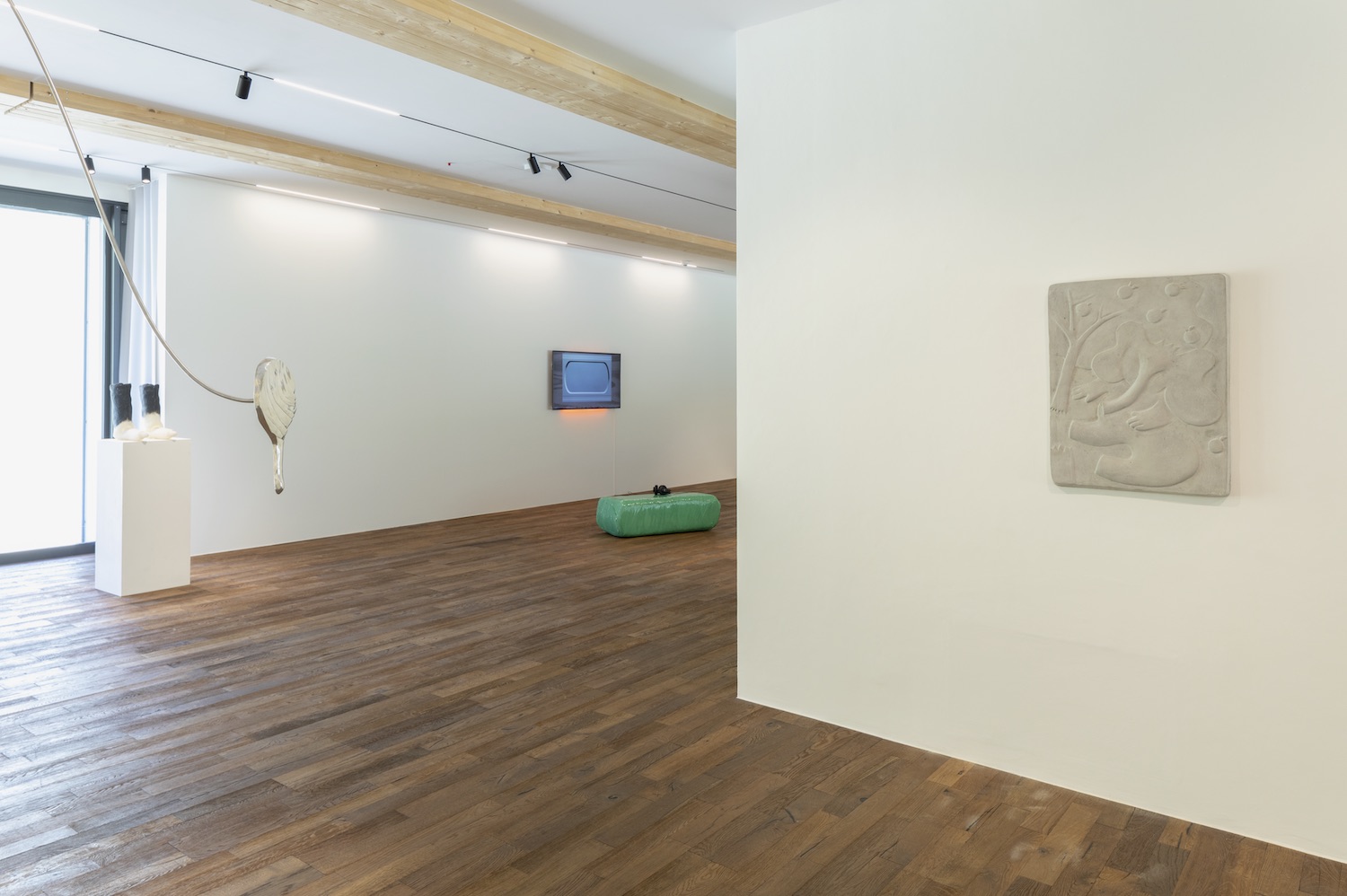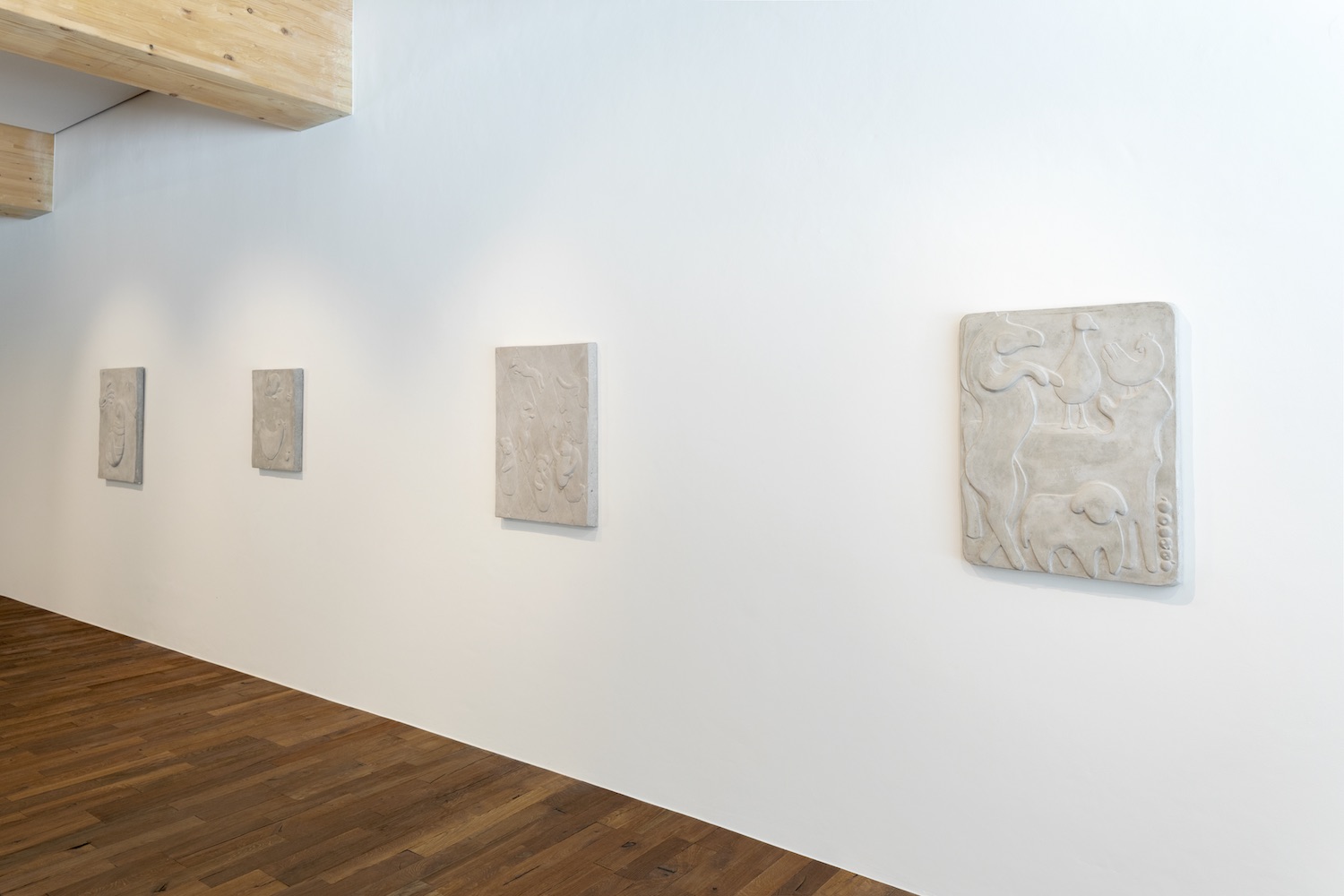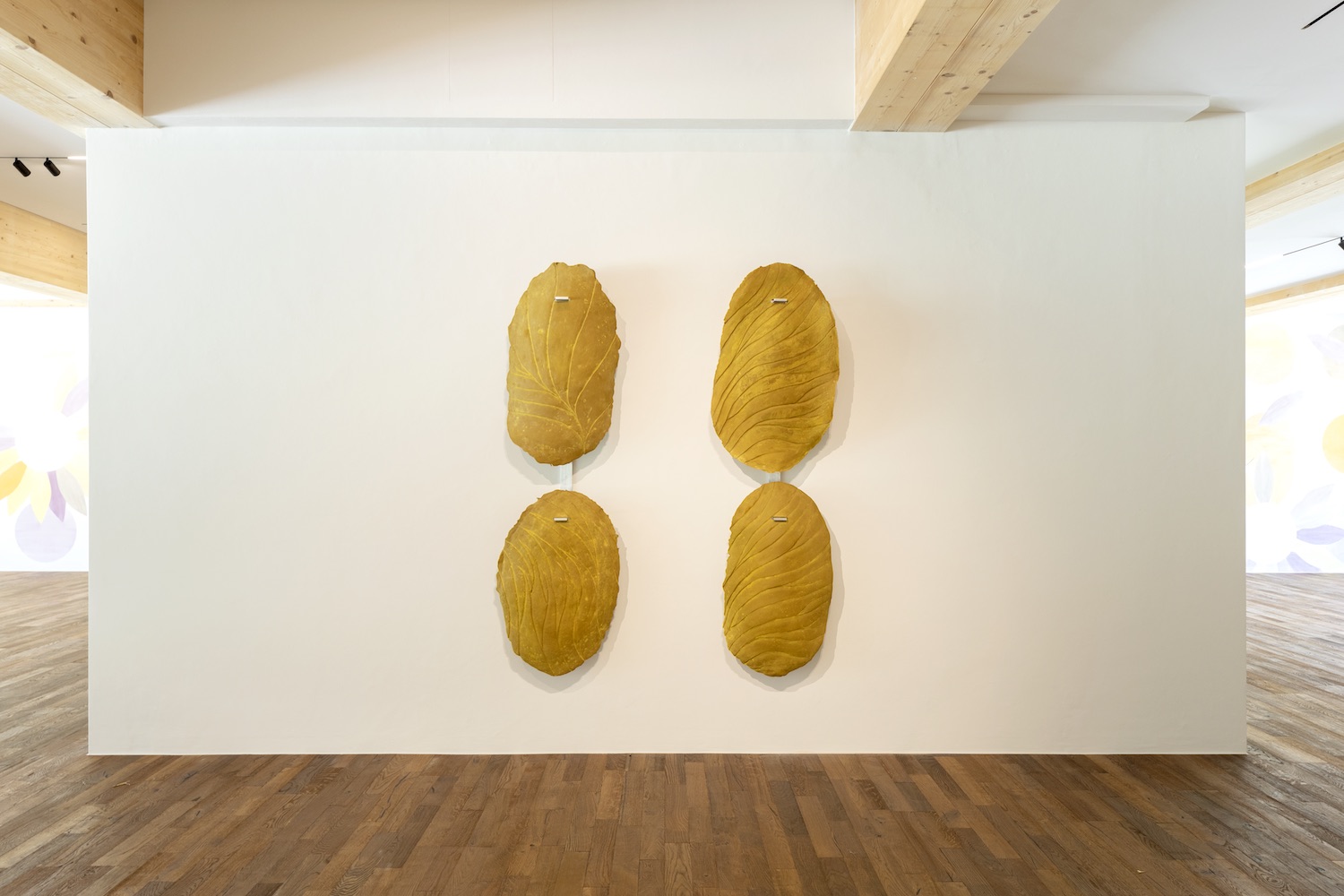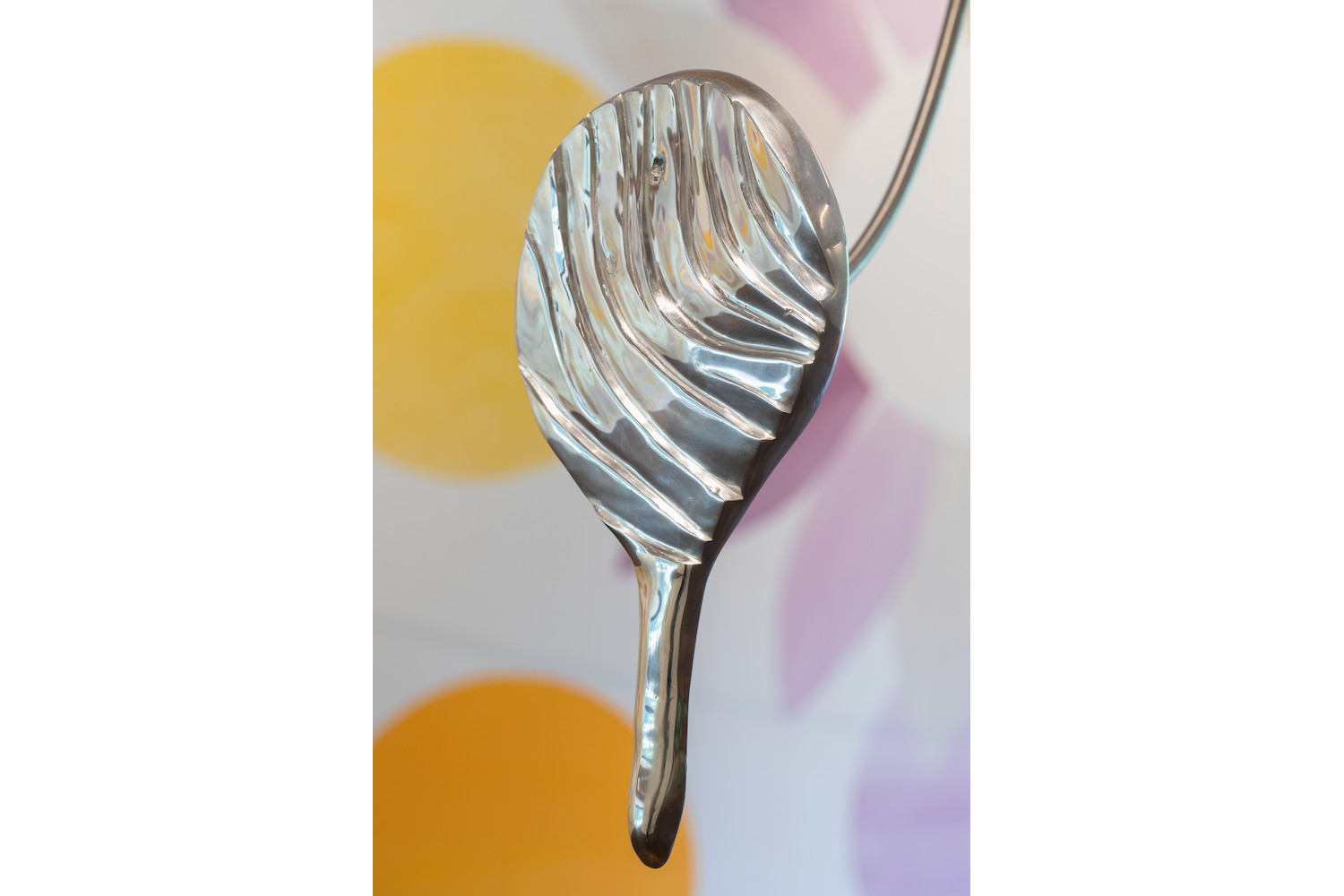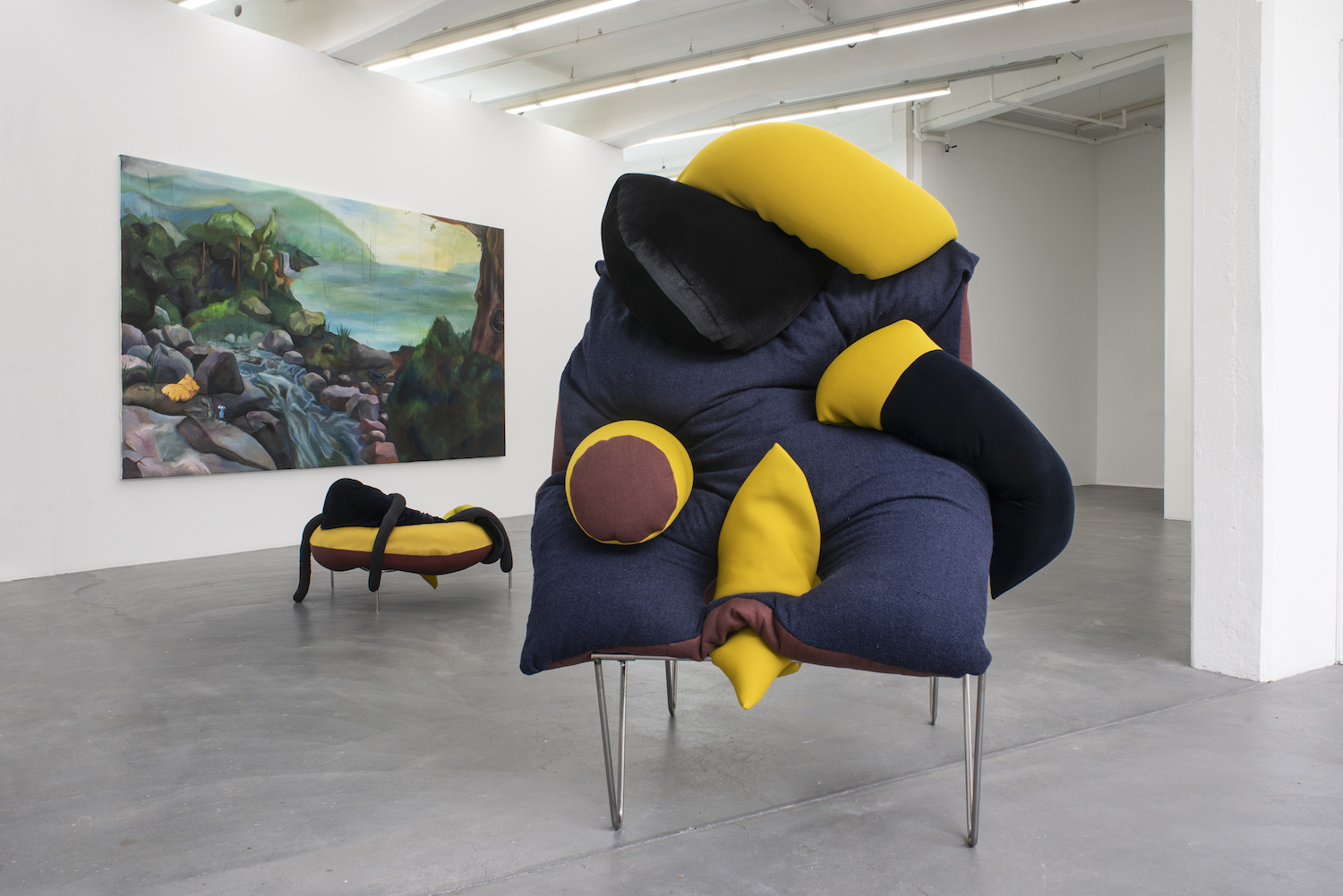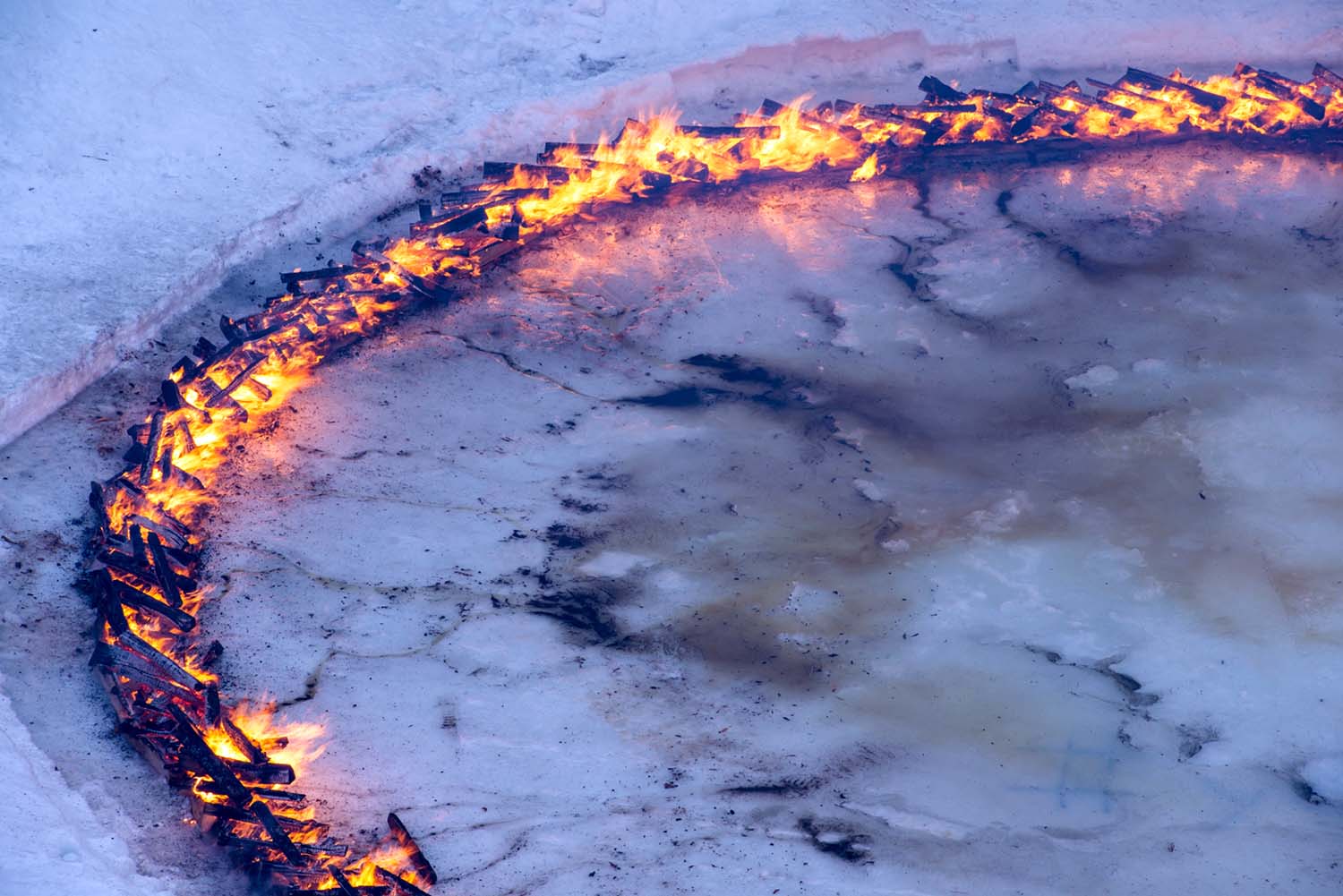Tarmak22 takes its name from the nearby airfield, the runway so close that the take off and landing of jets lend an excitement to the atmosphere. “The Sunrise Sings,” curated by Chus Martínez with assistance from Albertine Kopp, reflects upon nature, and the extent to which humanity is part of the natural world.
I saw in Saanen that there is a cyclical nature to walking around an exhibition, a rhythm that echoes the earth, the sun, the stars. For “The Sunrise Sings,” the first independently organized exhibition at Tarmak22, we orbited the artworks. All the artists in the exhibition have a link to Switzerland, and many of them are graduates of the FHNW Academy of Art and Design in Basel, where Martínez is the director of the Art Institute.
As you enter up the stairs into the center of the space, look to the left. Claudia Comte presents works carved from different characteristic woods in a range of symbolic shapes. Five are presented together, while the largest zigzagging work is presented alone. All are presented upon crate-like plinths topped with mirrors that have the effect of extending the works, but also of drawing the viewer in — to peek at themselves reflected with the artwork.
Charlotte Herzig’s site-specific installation of a gigantic flower mural (painted in the colors of a meadow) stretches across an entire wall of the gallery. Hand painted, and more than ten meters long, the work gently rises and falls with a meditative breath. Stepping lightly in front of the petals, you experience a disorientating shift of perspective — a sense of vertigo that rises from within, leaving behind a kind of quiet reverie.
Across the room, we read a story. Cast in concrete rectangles, depicting stylized scenes straight out of folklore, Kaspar Ludwig & Ambra Viviani have harnessed humanity’s greatest technology — storytelling — to create a modern mythological tableaux. These narratives are to be viewed side by side, perhaps as you would on Instagram, and presented in sequence, each unique myth a single image making up a larger story from our shared history.
Walking back, Gil Pellaton harnesses an actively ritualistic element in his sculptures. Golden-brown leaves are molded from ground turmeric, and they drop their spice if delicately scraped. Meanwhile a pair of shoes with the structure of corn subtly metamorphoses into feet as you stare. Are the shoes made for dancing? Or do these feet belong to someone, much, much larger than ourselves? A handheld looking glass wobbles midair on its arched support, reflecting the room in fragments.
In Katrin Niedermeier’s new media Arcadia, a character, Rose, plays a game where the goal is to grow, to find a personal truth. We play the game vicariously, and let Rose’s memories and experiences wash over us, while the now dancing, now failing avatar enriches our understanding of how we also interact with our inner struggles. Niedermeier’s glitchy, irreverent aesthetic is a joy to watch, a gentle reminder that humanity has fundamental philosophical questions to address.
Conceptually, the mirror stands at the center of the exhibition, balancing between nature and the technologies that we use to express ourselves. A perfect mirror doesn’t exist in nature, but even in the still surface of water, we find our reflections fascinating. It is a natural part of being human to seek an essence in the shadows and reflections of ourselves. In “The Sunrise Sings,” the artists show us that humans are hypnotized by stories, fascinated by mother earth, and intrigued by the magic of our own reflections.


